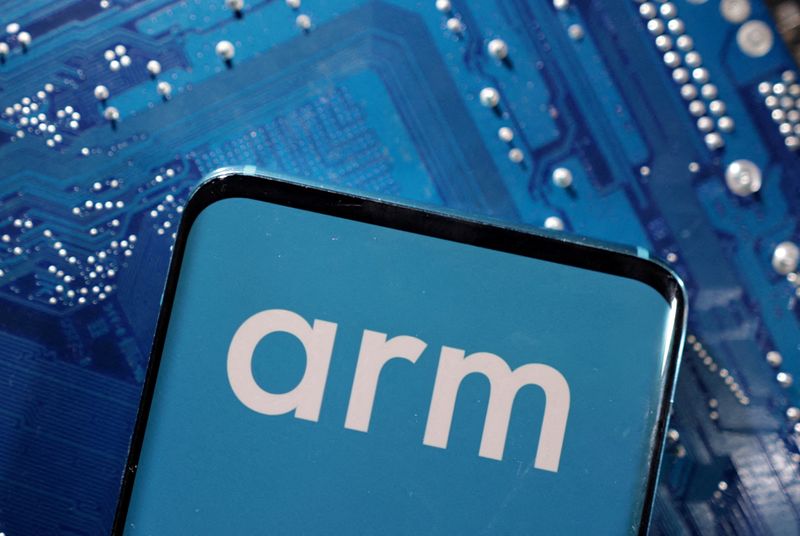Arm shares drop as analysts flag disappointing current-quarter forecast
Arm Holdings (NASDAQ:ARM ) delivered a current-quarter revenue forecast that disappointed many Wall Street estimates, which some analysts attributed to weak revenues from royalties outweighing those from licensing.
Nasdaq-listed shares in the UK-based company, which generates royalties through each chip sold using its technology and charges licensing fees for its semiconductor designs, sank in premarket trading on Wednesday.
For the third quarter, Arm guided for earnings per share of $0.32-$0.36 and revenue between $920 million to $970 million. The midpoint of this outlook roughly aligned with analyst expectations of $0.34 and $945 million, respectively.
Analysts at KeyBanc noted that while Arm maintained its full-year guidance for both sales and income, executives flagged that royalty revenues are now tipped to grow in the high teens percentage versus the prior year -- down from a previous estimate in the low-20s percentage year-on-year.
Growth in Arm's designs optimized for connected devices is now not expected to recover until its 2026 fiscal year, and demand at the firm's data center offerings will "continue to be slow," executives told analysts after Arm unveiled its latest quarterly results.
Arm's designs are used in nearly all of the world's smartphones, although the business has been building out its presence in other markets like data centers. Arm has also been seen as a potential beneficiary of the boom in enthusiasm around artificial intelligence, with Chief Executive Rene Haas saying demand for the nascent technology is "everywhere."
"AI is driving demand for our performance and power-efficient compute platform everywhere," Haas said.
Yet analysts quoted by Reuters said Arm's latest forecast failed to match the outlooks from chipmakers Nvidia (NASDAQ:NVDA ) and Advanced Micro Devices (NASDAQ:AMD ). They added that Arm faces the challenge of living up to the elevated expectations of these direct manufacturers of AI chips despite being several steps removed from the final products, Reuters reported.
Arm still reported second-quarter revenue and profit that surpassed analyst projections thanks in part to solid demand for its next-generation v9 architecture.
Group-wide revenue during the period increased by 5% to $844 million, with the v9 technology accounting for a quarter of the total. Adjusted earnings per share came in at $0.30.
(Senad Karaahmetovic and Reuters contributed reporting.)
Source: Investing.com
